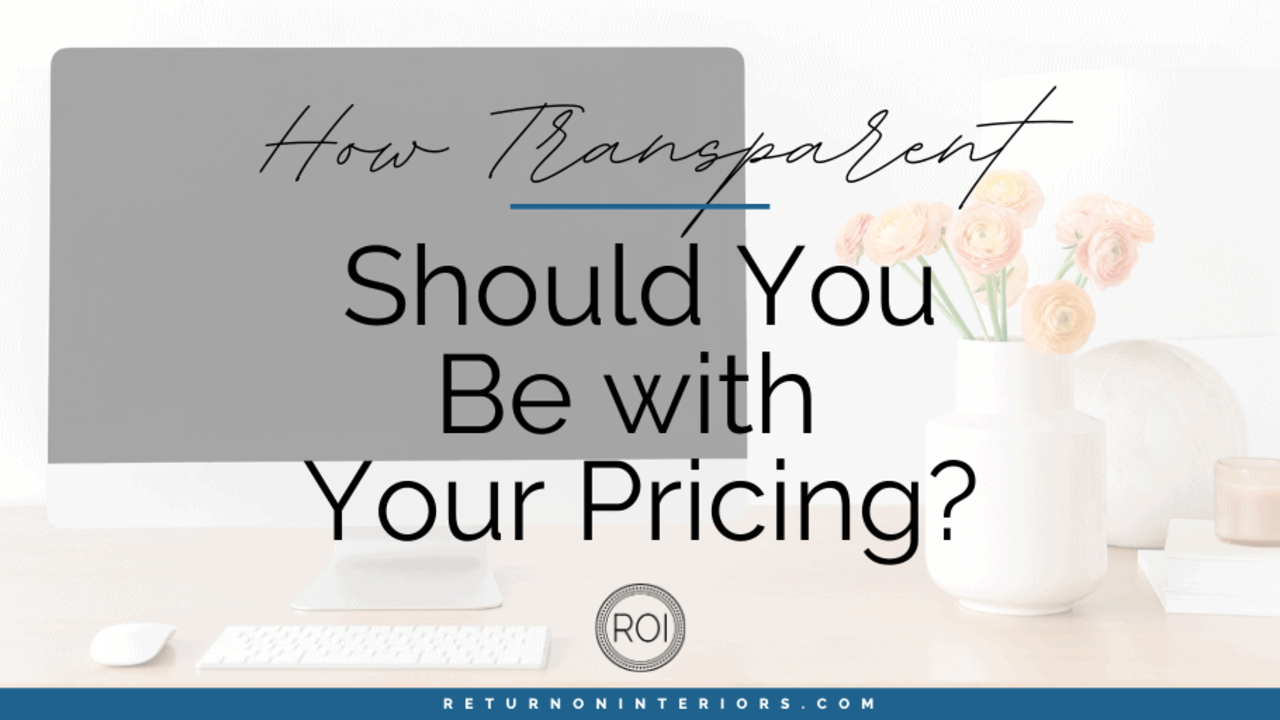
How Transparent Should You Be with Pricing?
This has been a HUGE talking point in the interior design business - how much to tell your clients (or show them) when it comes to fees and pricing. And like a lot of things in our world, for me it all comes down to communication. Let's take a look at best practices for transparency!
Your Fees
Working with a client is a matter of trust and honesty. In their eyes, they are giving you a ton of money and they want to know that you're going to be a good steward of that budget. And on your side, you want to be fair but still make a living. You aren't in this to provide a charitable service!
So the key is to explain, up front, how and why you charge the way you do. For some designers it can be as simple as saying that you charge a flat fee for the design and that it covers your intellectual property, your expertise, and your creativity. Clients get that. Then you can say that you bill hourly for your time from there. That would cover job site visits, meetings, and procurement time (see below for more on that).
If you explain that you bill for your time the way a lawyer does, that is something everyone can understand. It takes the "commodity thinking" out of the picture. And now, everyone completely gets how your fee structure works and why. No one will be sitting on the other side of the table imagining that you're trying to cheat them. That's the key! If you charge hourly for your entire project, just explain how it works. If you charge a flat fee for the entire project, break down what's included. Communication solves any issue when it comes to money.
Product Markups
Here is where designers don't want to show their cards. They want to charge what they charge and not have anyone question it. But think about it this way - your client can buy almost anything they want or need for the house on the internet, except for custom. They need to UNDERSTAND why they should pay you for this, too. So again, it is all about communication! It's better to over-explain than to leave them guessing.
If you want to continue with a mark-up model, then you explain that the markup is still less than retail, so they're saving in the long run. What the markup covers is your time in searching out and finding the perfect pieces, ensuring it all comes in on time and looks exactly as agreed, and that you will be troubleshooting any issues that happen. And there are ALWAYS issues. They are basically paying you to save them the time and headaches.
If that's still a problem, then you can always go another route that's working for a lot of designers today. You can say: "Sure! I'll show you every invoice and you'll pay it, including that great discount I can get you. But... you'll also pay me for my hourly time in procuring that product and following up with it until it's in your house in perfect condition." Clients can understand your time here, too, because they know what it takes to get orders in and they probably don't want to deal with that hassle.
Whether you show them invoices or not, it is YOUR JOB to help your clients understand WHY you work with the model you do! That's part of being a designer. You may not have to be completely transparent, but you need to be sure you are adding transparency into your dealings with your clients.
It's All in the Details
The idea is to give your clients as much information as they need to feel comfortable with the transaction. No matter how much money they have, it's important to them that you're watching the bottom line for them. Your client agreement and contract should spell out exactly how you charge and why. You need to go over it line by line in a meeting with them so there are no misunderstandings. AND you need to avoid underestimating what your time is worth.
Download my FREE Guide to Setting Client Expectations here. It will help you go over every detail with your clients so they know exactly how your process- and your billing-will go.


 Get almost 50
Get almost 50



